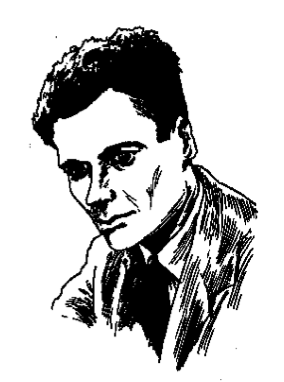As Lowell points out in his 1961 review of Yvor Winters’s slim Collected Poems,
Walter Bagehot begins a review of Lord Macaulay’s History of England with this sentence, “This is a marvellous book.”
I want to scrap all my impressions, pro and con, of Yvor Winters’s critical theories, insights, and prejudices, and say that his Collected Poems is a “marvellous book.”
Sometimes a book demands that its review begin like this. Sometimes nothing else will do. Lowell’s own Collected Poems, then, is a marvelous book.
It is daunting to review a book that contains 1,200 pages and nearly the entire creative output of one of the most respected writers of the last century. This book is heavy and hard as a brick—as two bricks, even—and contains poems as densely packed. This, then, amounts to a disclaimer of sorts. It is not possible to do justice to the fairness and scholarship exhibited here by the editors, Frank Bidart, one of Lowell’s former pupils and closest friends, and David Gewanter.
The Collected Poems contains all but one of Lowell’s books: Lord Weary’s Castle (1946), The Mills of the Kavanaughs (1951), Life Studies (1959), Imitations (1961), For the Union Dead (1964), Near the Ocean (1967), History (1973), For Lizzie and Harriet (1973), The Dolphin (1973), Day by Day (1977), and three poems amassed under the title Last Poems (1977). The missing collection, Notebook, was published in a first edition in May 1969, in a second version in July of that year, and again in a revised third version (featuring more than ninety new poems) in January 1970. Lowell, in a note to the third edition, stated, “I am sorry to ask anyone to buy this poem twice. I couldn’t stop writing, and have handled my published book as if it were a manuscript.” He then went on to carve both History and For Lizzie and Harriet out of Notebook, and Frank Bidart, in choosing to include the two later books at the expense of the earlier, concludes that “Notebook is less ‘well-written,’ perhaps—but, in its free-wheeling catch-as-catch-can improvisations, compelling in an entirely different way from History. Lowell in the end didn’t think of either book as replacing the other, and hoped both would remain in print. When, in his Selected Poems the year before his death, he had to choose which to excerpt, he chose History.”
This book also contains seven appendices which together comprise...
You have reached your article limit
Sign up for a digital subscription and continue reading all new issues, plus our entire archives, for just $1.50/month.
Already a subscriber? Sign in





